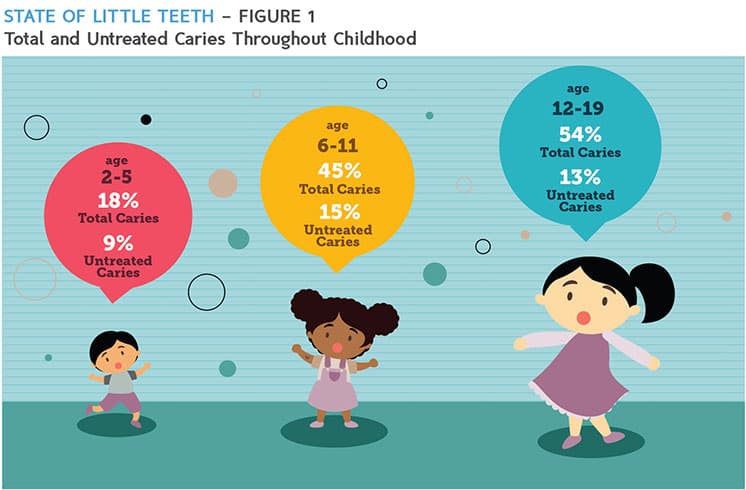
Why Little Teeth Matter
The American Academy of Pediatric Dentistry (AAPD) is bringing the importance of the age 1 dental visit to the forefront with an update to its 2014 “State of Little Teeth Report.”
The American Academy of Pediatric Dentistry (AAPD) is bringing the importance of the age 1 dental visit to the forefront with an update to its 2014 “State of Little Teeth Report.” Despite an overall decrease in the prevalence of caries, the report suggests there is room for improvement and provides solutions and advice from oral health care leaders.
The updated report, “State of Little Teeth Report, Second Edition,” stresses the importance of the age 1 dental visit. Despite parents’ and caregivers’ growing awareness of the importance of children’s oral health, nearly three-quarters of US parents continue to delay the first appointment, mainly due to lack of understanding of the importance of the visit, or confusion over when it should occur. Some parents believe a child’s first dental visit should occur by age 4. The AAPD recommends the first visit take place when the first tooth erupts, and no later than the child’s first birthday.
“The good news is more children are visiting the dentist than ever before. Nearly five in 10 children (birth to age 20) had a dental visit in 2015, an increase from four in 10 children in 1996,” says Joseph Castellano, DDS, president of the AAPD.
The greatest growth was seen in low-income children, a population most vulnerable to preventable caries disease. As dental care utilization among children covered by public insurance increased from 35% in 2005 to 50% in 2016, the gap narrowed between children from lower- and higher-income families. As a result, pediatric and general dentists have an expanded opportunity to educate children and parents/caregivers not reached before due to financial disparities, Castellano explains.

But there’s still work to be done, as data from 2015–2016 shows that caries affects one in five children under the age of 5, about half of children ages 6 to 11, and more than half of those ages 12 to 19. Additionally, 9% of children ages 2 to 5 have untreated caries in primary teeth.
Because oral conditions negatively impact overall health, the AAPD suggests continued expansion and support for public health insurance, such as Medicaid and the Children’s Health Insurance Program (CHIP), collaboration between primary care medical providers and oral health professionals, as well as addressing transportation and language barriers that prevent patients from visiting the dentist.
“The importance of the age 1 visit to prevent early childhood caries should guide the policies of public insurance programs, such as Medicaid and CHIP, to cover oral evaluations for children under the age of 3,” says Castellano. “While 38 states provide Medicaid coverage for the early visit, this means 12 do not. The financially challenged children in those states have less access to early preventive care that can reduce the incidence of childhood caries and more costly interventions at future dental appointments.”
Education is also key. Oral health and medical professionals should inform parents/caregivers about the significance of the age 1 dental visit as an important first step in preventing early childhood caries. The first dental visit allows clinicians to complete a caries risk assessment to tailor a preventative and management treatment plan to meet a patient’s individualized needs and risks—thus setting the patient up for a future of oral health.
Clinicians can also use this visit to discuss the importance of establishing a good oral hygiene routine and healthy dietary practices, as well as the importance of oral health on overall well-being. And parents/caregivers can be reminded that delaying treatment will not only lead to more pain, but more extensive and costly therapies.
“Many parents don’t know that caries can make children more vulnerable to various infections in other parts of their body, such as the ears, sinuses, and the brain,” says Castellano. “Further, untreated lesions can result in significant pain, chewing difficulty, poor speech articulation, poor sleep habits, and even lower self-esteem and school performance.”


